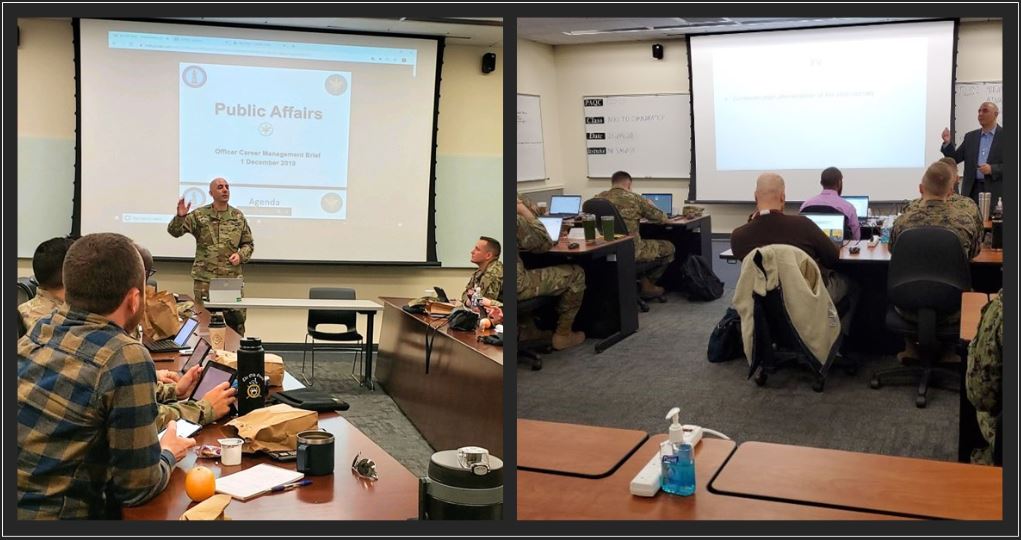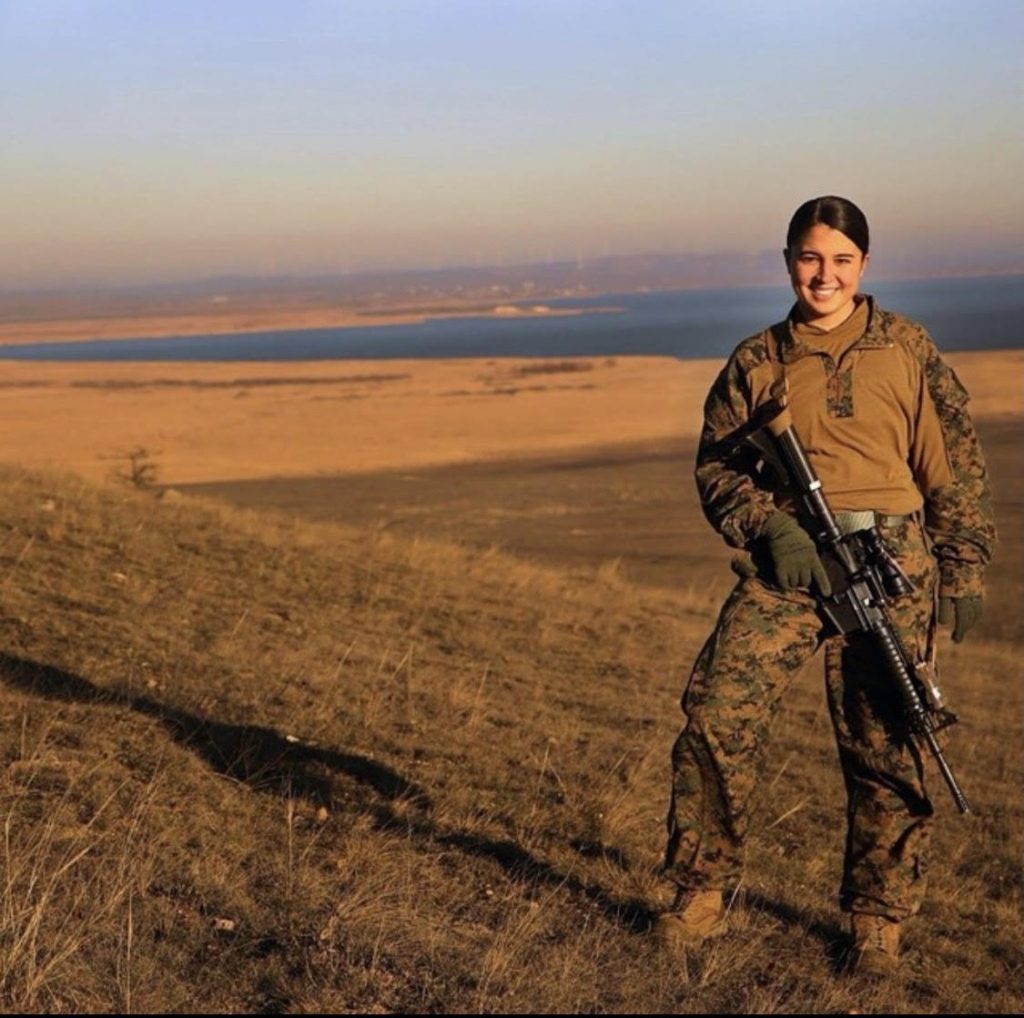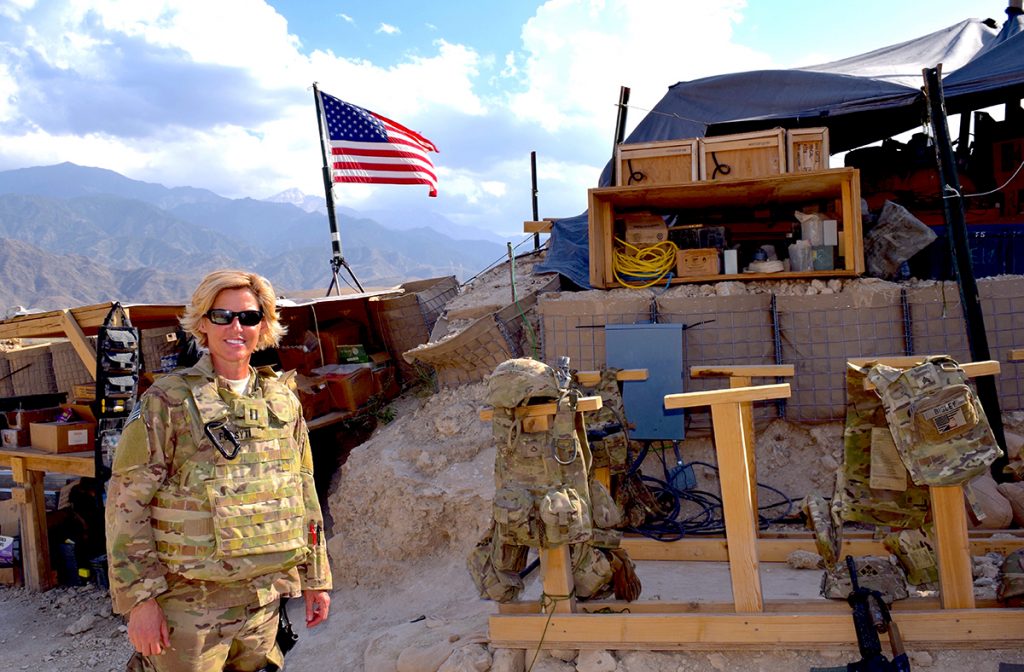Voice of Service: A Look at Communications in the Federal Government
Published on December 3, 2020, at 8:55 p.m.
by Tralene Hunston.
Considering a career in the public relations realm? How about looking into a public affairs position within the federal government? The Department of Defense (DoD) and the Department of Homeland Security (DHS) offer a range of opportunities for employment in public affairs.
This PR Daily article defines the differences between public affairs and public relations, with public affairs relating to matters that concern the public directly and public relations focusing on a company’s relationship with the public.
“There is a wide array of opportunities to work for federal and state agencies. Government organizations, at all levels, require well-trained, responsive and approachable communicators,” said Amy Forsythe, public affairs officer (PAO) at Marine Corps Tactical Systems Support Activity (MCTSSA), based at Camp Pendleton, California. “Those who enter government service in the public affairs field are people who truly have a calling to serve and provide solutions within their communities.”
Education requirements
Like agencies and corporations, the DoD and the DHS expect their public affairs employees to have formal education and communication training. Uniformed service members in the public affairs field are required to attend either a nine-week in-residence or a six-month distance learning qualification training course at the Defense Information School (DINFOS) located at Fort Meade, Maryland. Courses are also available to applicable civil servants and international students.
Col. James Sahady, public affairs officer (Army Reservist) at the Defense Media Activity and public affairs instructor at Lewis-Price & Associates Inc. supporting the Public Affairs & Communication Strategy Directorate, Defense Information School, teaches his experiences to the students.
“Students are expecting to learn up-to-date and relevant information,” Sahady explained. “Our overall end-state is to ensure that the curriculum meets the needs of the service branches and enables the students to be effective communicators. We have instructors that are real-world subject matter experts who share their experience, teaching the students how to put their education into practice with the intent of taking that knowledge back to their organizations.”

While many DoD public affairs positions are held by those serving in the military, active duty service is not required to enter the field. Those with traditional communication and public relations degrees, or those with applicable experience, can also find employment within the DoD or DHS as public affairs and visual information specialists.
Additionally, PRSA offers a military public affairs credential, APR+M, enabling employees to advance knowledge and remain competitive.
What to expect
Those looking to work in DoD or DHS public affairs can expect a fulfilling and exciting experience.
“No two days are the same, which I enjoy. Some days you feel like you are running around with a fire extinguisher answering media inquiries, helping prepare leadership for a speaking engagement, or working to meet deadlines for media releases,” Kim Robinson, communications chief at Department of Homeland Security, Countering Weapons of Mass Destruction Office, said. “Other days are a bit more routine where you are assisting program managers prepare public affairs guidance or working to improve processes and procedures.”
Those entering the field should acknowledge that every day will be different, but it is also essential that incoming practitioners are prepared to be strategic with their communication.
“I liken it to ‘Scandal,’ where you’re spending your days searching for solutions to problems, and it’s not financial problems; we aren’t a large company trying to influence consumers to purchase something. We spend our time trying to communicate what we are about and the differences that we make,” said Master Sgt. Evelyn Chavez, public affairs information section chief at the Secretary of the Air Force Public Affairs Office, explained. “It’s different every day; we never respond to something the same way. It’s essential to be in tune with what your organization stands for and know how to be creative with strategically delivering these messages.”
Most memorable experiences
When asked to share their most memorable experiences in public affairs, the overwhelming majority responded with crisis communications. From Sahady’s role as the PAO during the Boston Marathon bombings to military airplane crashes, active shooters and missing service members, it is clear that crisis communication solidified the role and enhanced the career expertise of each PAO.

Capt. Danielle Phillips, PAO for the Marine Corps Wounded Warrior Regiment, acutely acknowledged the double-edged sword of this finding. “The worst day for the Marine Corps is when public affairs (COMMSTRAT) shines because the unfortunate reality is that it becomes a break in case of emergency where you can really see the effectiveness, professionalism and skillset of public affairs, but it’s never for a topic you enjoy. People who do PR crisis management for a company, it’s a transaction, but in the military, when you’re doing public affairs, it’s not a transaction. You’re dealing in human emotion, lives and inherent risk.”
Like Phillips, one of Forsythe’s most memorable experiences was during a crisis event requiring focused and laser-sharp communication efforts, but she also shared some of her fun experiences as a U.S. Navy Reserve PAO.
“I was part of the team that was responding to the active shooter incident at the historic Washington Naval Yard where 12 people were killed in 2013. The media descended upon the front gates of the small base within minutes, creating a very chaotic environment in an already emotional and high-stress situation,” Forsythe said. “While that was one of the more challenging events in my career, I’ve also had many great experiences, including deploying to Afghanistan three times and supporting numerous media events during NYC’s Fleet Week in 2011, where we made appearances on ‘The Today Show’ and ‘Live with Regis and Kelly’.”
Best practices and tips for new entrants
New entrants to public affairs may be concerned about putting their best foot forward and making the right decisions.

“The best practices are inclusion and transparency. Inclusion is more than just from your team. Knowing the overall goals of all your stakeholders helps you to tell their story,” Robinson recommended. “Transparency applies to both internal and external audiences. Without transparency, you lose credibility and trust, which you must have to be successful in this field.”
Robinson’s tips for ensuring inclusion and transparency help solidify public trust, but it’s also important to understand the media climate.
“A public affairs practitioner must know how to communicate strategically and value what the core of the organization is and how to communicate that,” explained Chavez. “Really learning and understanding how the new media environment works, what platforms are available and how social media functions is beneficial to the organization.”
Lastly, continuing education provides practitioners with the ability to grow, ultimately enhancing themselves and the organizations they represent.
“Be prepared to be the public affairs subject matter expert or know where to find the pertinent information and/or who to contact to ensure the mission is accomplished,” Sahady said. “My tips for new entrants in the public affairs field are to seek out a mentor and focus continuously on sharpening their communication skills. Reading books such as ‘The 7 Habits of Highly Effective People,’ ‘Why Should the Boss Listen to You?’ and ‘How to Win Friends and Influence People’ will enhance their leadership skills and help the practitioner become an effective communicator.”
For those who have a calling to service and are looking for an exciting, purpose-driven career in public affairs, DoD and DHS public affairs work may be the right arena. DoD and DHS public affairs practitioners are welcoming, dedicated to mentorship, happy to share their experiences and aim to elevate their field.




